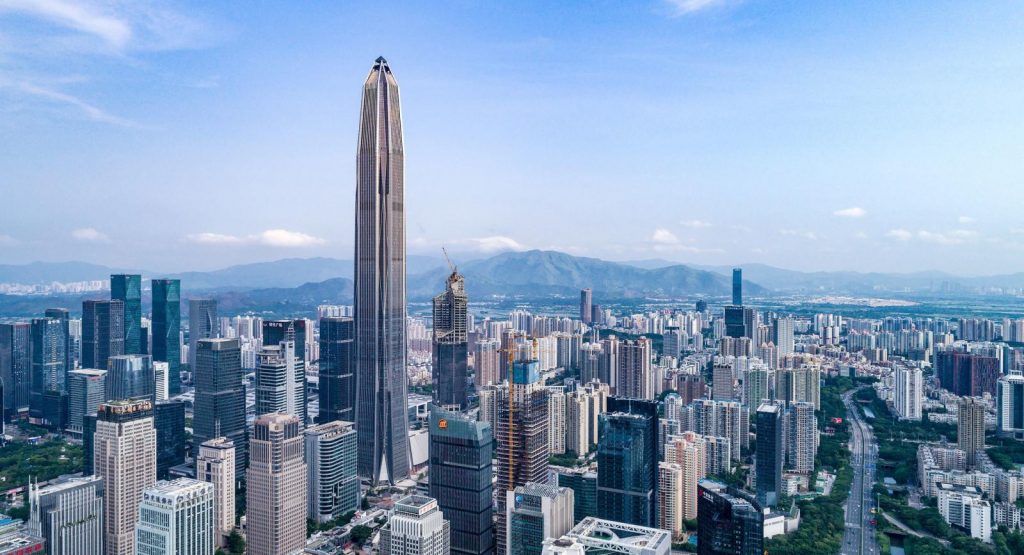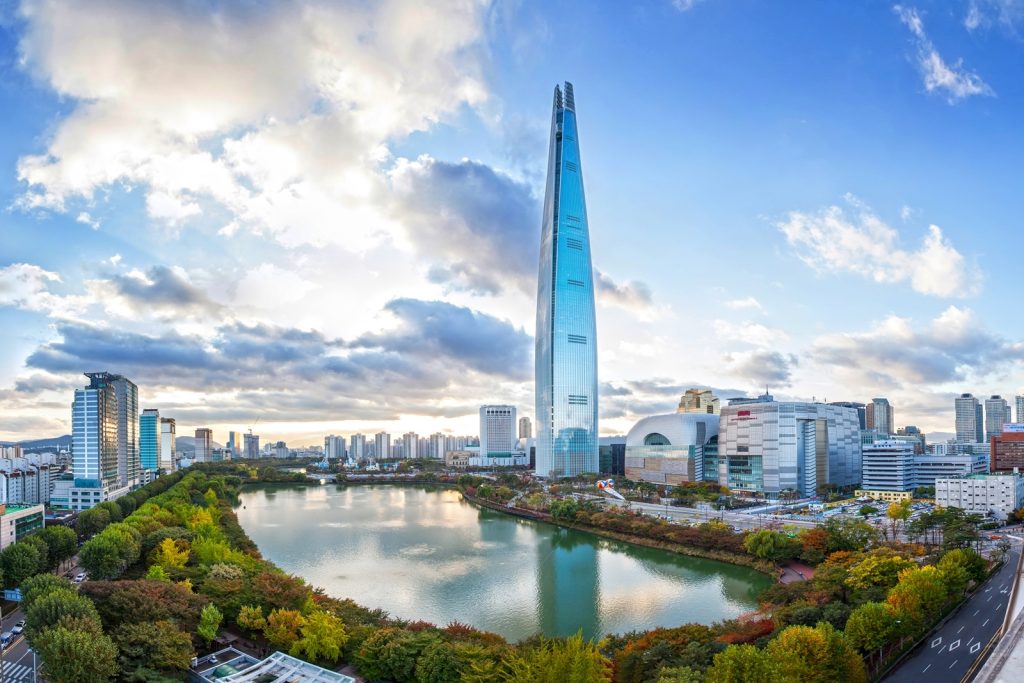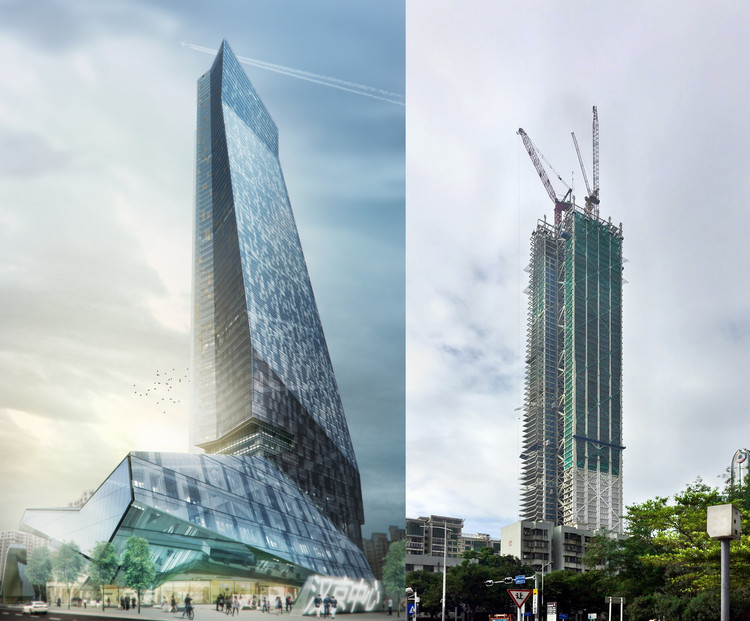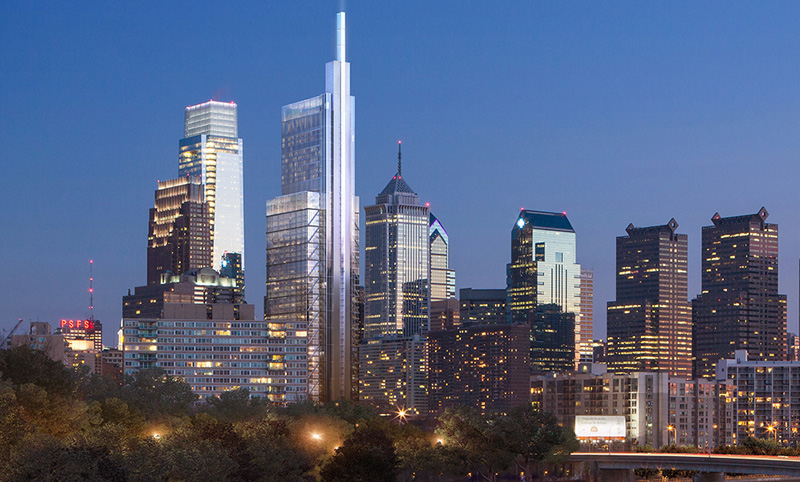Last year, 144 skyscrapers over 200 meters were built all over the world, setting a new record for the greatest number of skyscrapers built in a single year. The 144 skyscrapers can be found in 69 different cities across 23 countries, but more than half of them were built in China. The tall buildings come in a variety of shapes and sizes, but they have one thing in common: steel is the material serving as the backbone of the grand structures.
This year, more skyscrapers will fill the skylines of cities, mostly in Asia. Continuing on from previous years, cities, architects and the general public alike are favoring low-energy, sustainable buildings and showing a tendency to renovate existing buildings with reinforcements where possible.
Take a look at 2 of the tallest skyscrapers built in 2017, and some of the most exciting building projects coming scheduled for completion in 2018.
2017: Ping An Finance Center
The Ping An Finance Center is located in the city of Shenzhen, and is the second tallest building in China and fourth tallest building in the world. The entire structure measures 599.1 meters, or 1,965 feet, offering 119 floors of office and retail space.

Stainless steel keeps the Ping An Finance Center protected against the strong winds and salty climate of Shenzhen. (Source: Kohn Pedersen Fox)
The Ping An Finance Center is classified as a composite building, meaning both steel and concrete materials are used to make up the main structural parts of the skyscraper. This can apply to any of the following combinations – steel columns with concrete beam floors, steel structure with a concrete core, steel columns encased in concrete or a system of steel tubes filled with concrete. The exterior is outfitted with a sculpted stainless steel facade for maximum corrosion resistance to coastal climate.
2017: Lotte World Tower
Korea’s Lotte World Tower is the tallest building in Korea and the fifth tallest building in the world measuring 555.7 meters and 1,823 feet from the ground to the very top. Construction began in Seoul back in 2011 and took 7 years to complete. The 129-story building is made of a reinforced concrete core, concrete encased steel columns and steel floor spanning.

Seoul’s Lotte World Tower was built with 40,000 tons of steel. (Source: Arch Daily)
POSCO supplied the 40,000 tons of steel to build the Lotte World Tower, consisting of both regular and thermomechanical control processed (TMCP) steel. As part of POSCO’s solutions marketing, the company proposed using 120 mm thick high-performance grade steel (SM490TMC) instead of welding 40 mm and 80 mm thick plates together for better performance and cost efficiency. The steelmaker also proposed the use of a steel column flat plate structure and steel piping for enhanced shock, high-wind and fire resistance.
Lotte World Tower also features solar panels, wind turbines and water harvesting systems as part of a sustainable, eco-friendly design.
SEE ALSO: Steel Wonders of the World: POSCO Steel Builds the World
2018: Hanking Center Tower
The Hanking Center Tower scheduled for completion in March of 2018, will set a new world record as the tallest all-steel building in all of Asia. Most skyscrapers are made of a mixture of concrete and steel, but the Hanking Center Tower is composed of a unique, all-steel structural system. The main body is also detached from the core by about 9 meters, held together by a series of sky bridges and steel braces to allow the building flexibility to withstand seismic activity and maximum exposure to natural light.

The Hanking Center Tower is the tallest all-steel building in Asia. (Source: Curbed)
At 350 meters, or 1,148 feet, the Hanking Center Tower will be classified as a super tall building when completed in west Shenzhen, China. The building underwent extensive seismic and wind tunnel tests for performance verification, and residents and visitors alike will be able to enjoy the sky gardens and spacious open spaces in the heart of the city.
2018: Salesforce Tower
San Francisco has a new tallest building with the opening of the Salesforce Tower in January of this year. Standing at 326.1 meters, or 1,070 feet, the skyscraper also made extensive use of steel for its columns and floor spanning and features a reinforced concrete core. The Salesforce Tower is also one of San Francisco’s most-expensive buildings at USD 1.1 billion.

The Salesforce Tower is the tallest building in San Francisco. (Source: Curbed)
Not only is the 65-story building San Francisco’s tallest building, it is the city’s first commercial building to use a water recycling system. The city government, Boston Properties and Salesforce teamed up to support blackwater reuse that will give tenants of the building access to recycled water. The skyscraper also has net-zero greenhouse gas emissions.
2018: Comcast Technology Center
The 341.7 meters, or 1,121 feet tall Comcast Technology Center opened early this year, and stands as Philadelphia’s tallest skyscraper. The USD 1.6 billion building also has smart features, including a central plant that acts as the brain of the building, using artificial intelligence to learn human patterns.

The Comcast Technology Center is a green building with smart features. (Source: The Skyscraper Center)
The skyscraper can track the number of people inside, predict weather patterns and will only generate just enough energy required for any given time. The building also makes use of water running through all parts of the building to cool temperatures and has a special, silver coated glass which can repel heat from the sun. As such, the Comcast Technology Center is one of the most technologically advanced and green buildings in the U.S.
Continuing on from a strong year of construction in 2017, the new skyscrapers of 2018 and beyond will continue to strive for environmental sustainability, incorporate newer technologies and make extensive use of steel for cost efficiency and safety.













